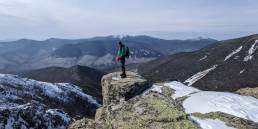Soaring fjords, sandy beaches, barren cliffs, boggy tundra, thick forests, and the Earth, naked. That’s Gros Morne National Park. Situated on the western coast of Newfoundland, the park was established in 1973 to protect a nearly 700-square-mile area of glacial and geological significance. It was later designated a UNESCO World Heritage Site, and is one of the best examples of the effects of continental drift. The isolated mountain tops are home to the physical remnants of ancient collisions and separations, further shaped by massive glaciers. But even if you’re not into geology, one look at any of the best-known spots in the park makes it easy to see why it’s worth the trip. And thanks in large part to the park’s geological wonders, there’s an incredible variety of outdoor fun to be had.
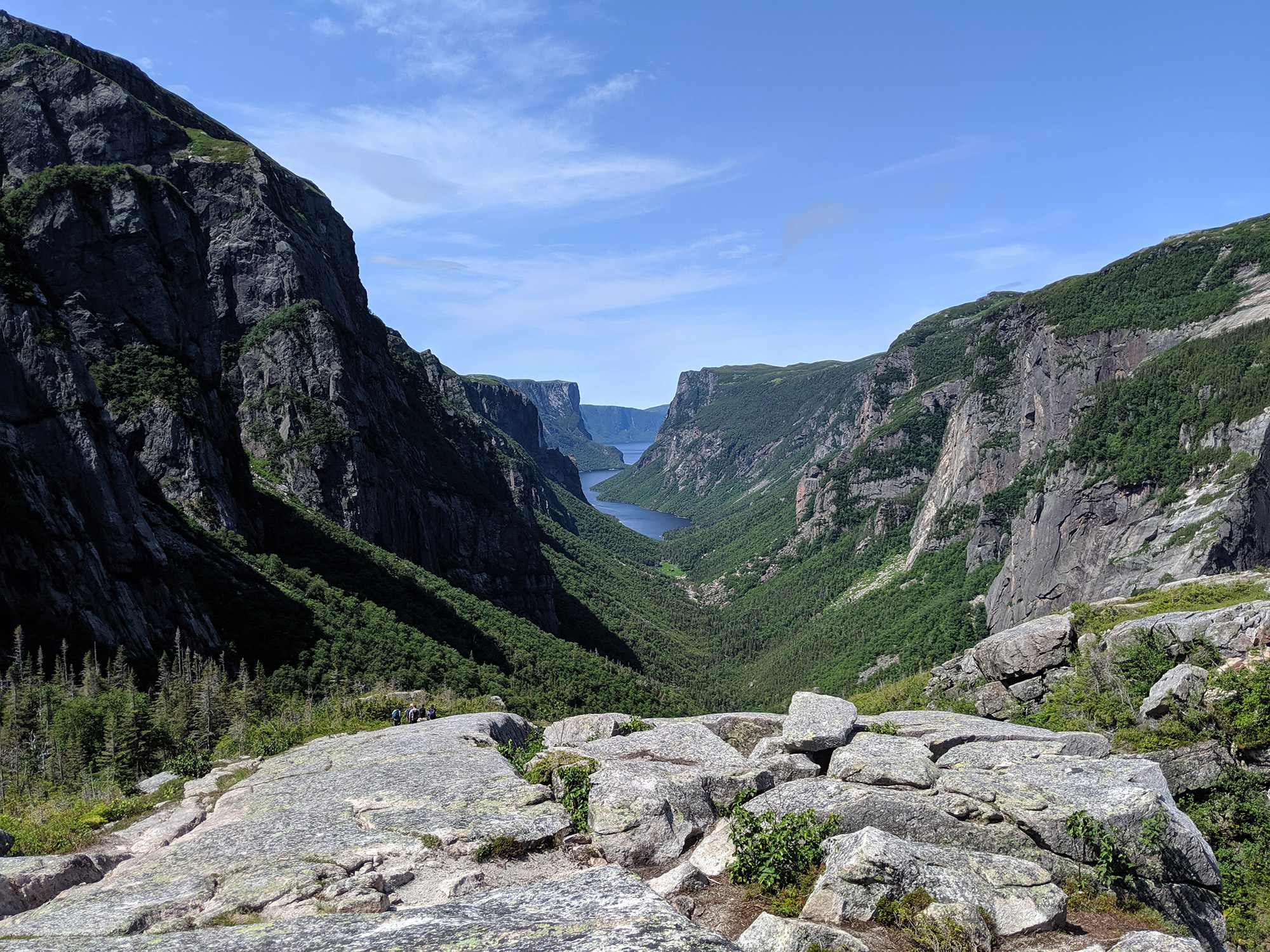
1. Explore Massive Fjords
This spot at the top of Western Brook Pond is one of the most famous views in Gros Morne National Park. And it’s one of a few similar views depending on how hard you’re willing to work to get to them. Gros Morne’s fjords were carved by ancient glaciers, and when the glaciers receded, the land rebounded, free from an incredible amount of pressure, cutting the ponds and lakes off from the sea.
Just driving along route 430 gives you glimpses of the fjord, but there’s more than one way to get up close to Western Brook Pond’s towering cliffs. Take a boat tour if you only have a few hours, or sign up for a guided hike if your goal is to stand near the top of the fjord. If you have multiple days and wilderness navigation experience, reserve a permit for one of the backcountry routes to go beyond the top of the fjord. Views of Ten Mile Pond are equally spectacular and can be seen from the top of Gros Morne Mountain, a 10 mile round trip day hike.
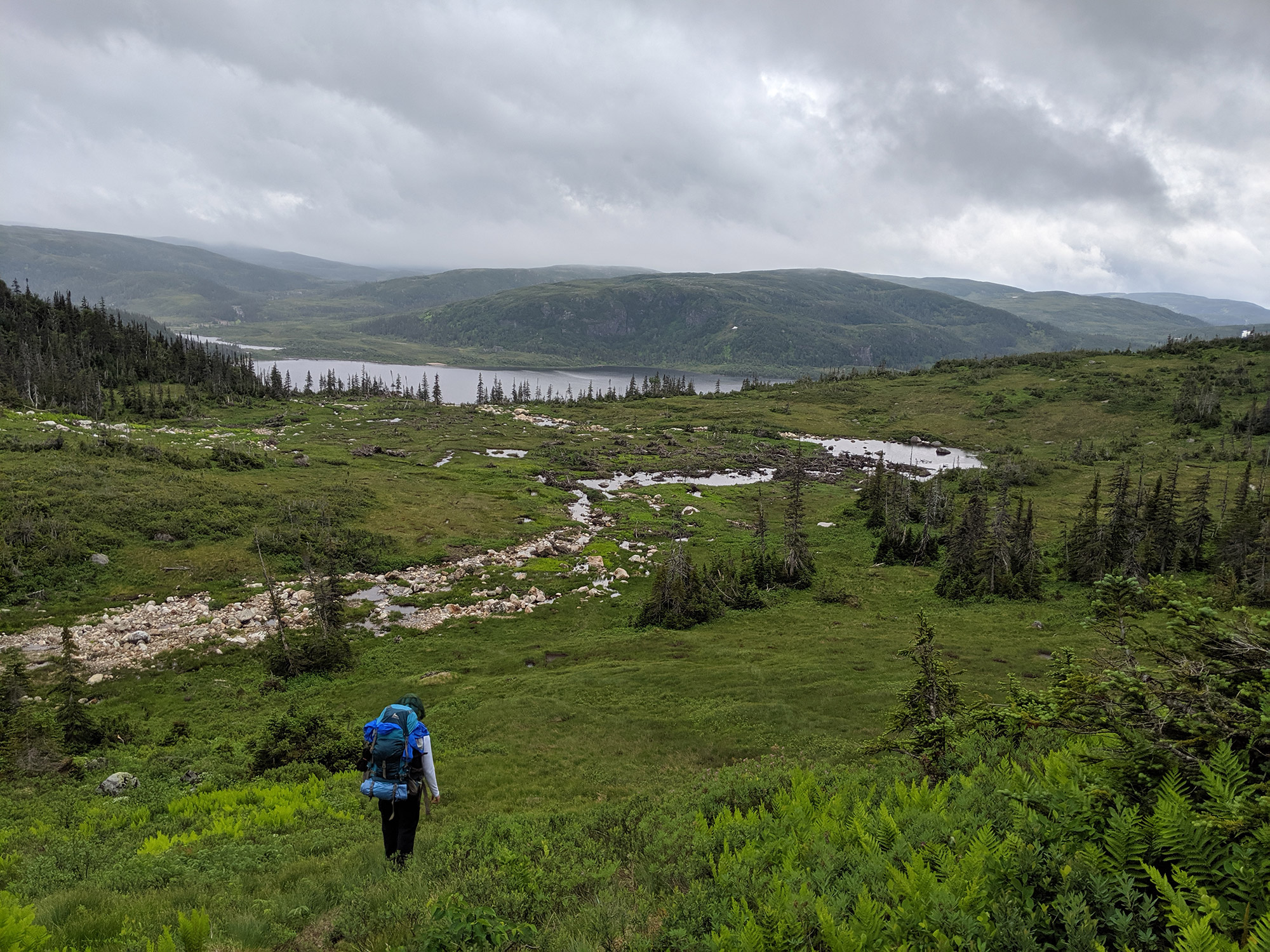
2. Have a Real Wilderness Backpacking Experience
If backcountry experiences described by Parks Canada as “mentally and physically challenging” sound appealing, then you’ve come to the right place. Exploring the Long Range Mountains isn’t for the faint of heart, and requires hikers to be completely self-sufficient. Proficiency in GPS and map and compass navigation is paramount; There are no maintained or marked trails, and plenty of game trails to throw unsuspecting hikers off route. Terrain can be muggy, boggy, snowy, rocky, and slippery, and depending on the season, the bugs are relentless. Weather can change in an instant, and if you get yourself in trouble, rescue can be days away.
Aside from the many hazards, the scenery is incredible. The Northern Traverse, Long Range Traverse, and a combination of the two are the best ways to see the most of the wilderness in the Long Range Mountains, but choose wisely, and read up on documentation from Parks Canada before you go. The more prepared you are for the terrain, weather, and navigational challenges, the better. Permits are required and must be reserved in advance.
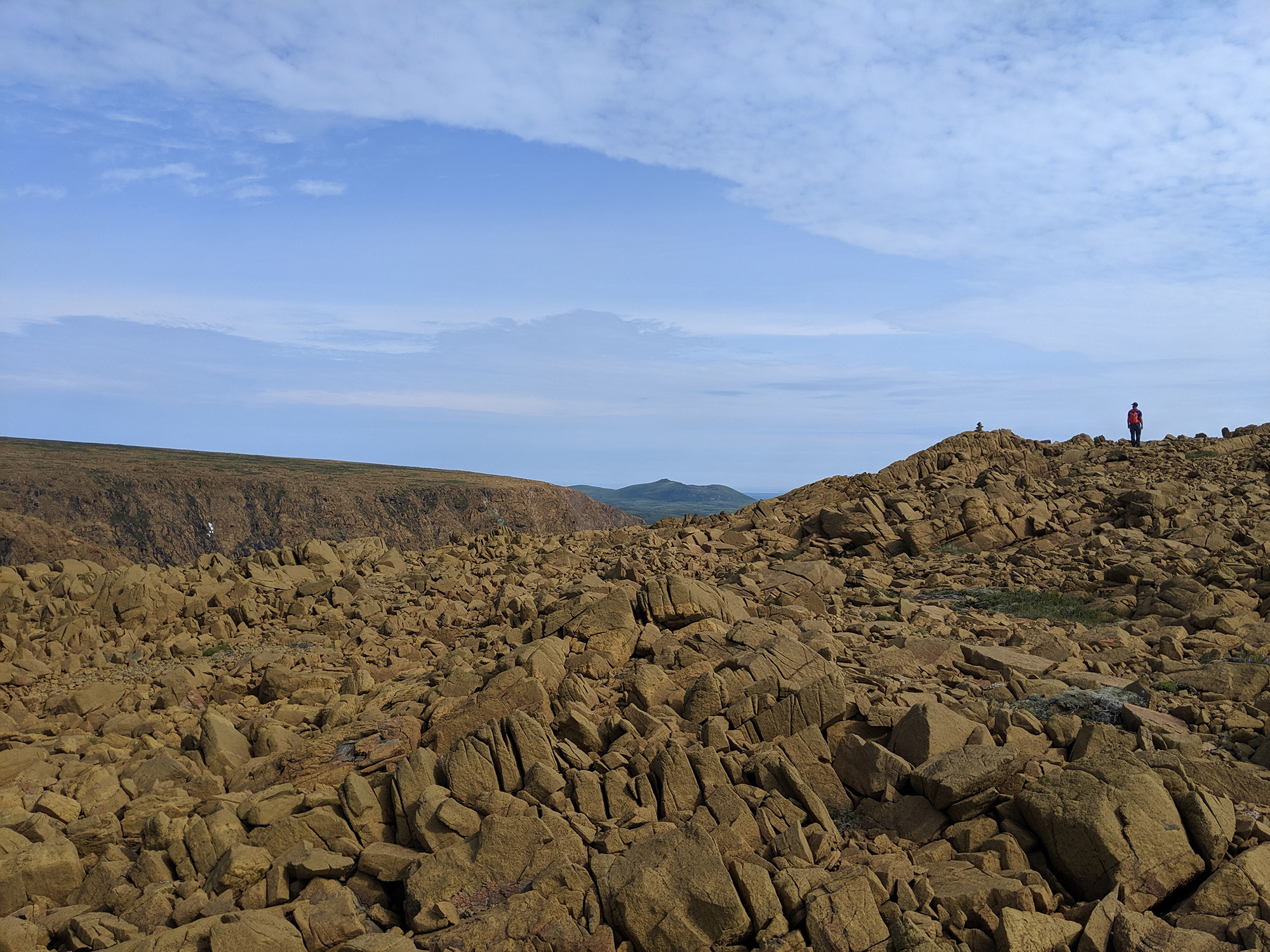
3. Take a Walk on the Earth’s Mantle
“This rock I’m standing on used to be at the bottom of an ancient ocean,” is a pretty incredible realization to have on a hike. Gros Morne Tablelands were once thought to be remnants of molten rock, but when geologist Robert Stevens discovered rocks much older than other rocks in the area lower in elevation, he proved otherwise. The rocks had eroded from the Tablelands, illustrating that the Tablelands aren’t old molten rock. They’re really old remnants of an ancient ocean, pushed up from below during the collision of two ancient continents.
The rock is high in toxic heavy metals and other minerals, making it challenging for things to grow and leaving the majority of the terrain completely bare. But there’s still so much to see. Choose an out-and-back hike ranging from 1.8 to 5.6 miles in length, or a 7.5 mile off-trail loop, all starting from the Tablelands Trail parking area, to get up close and personal with this fascinating landscape.
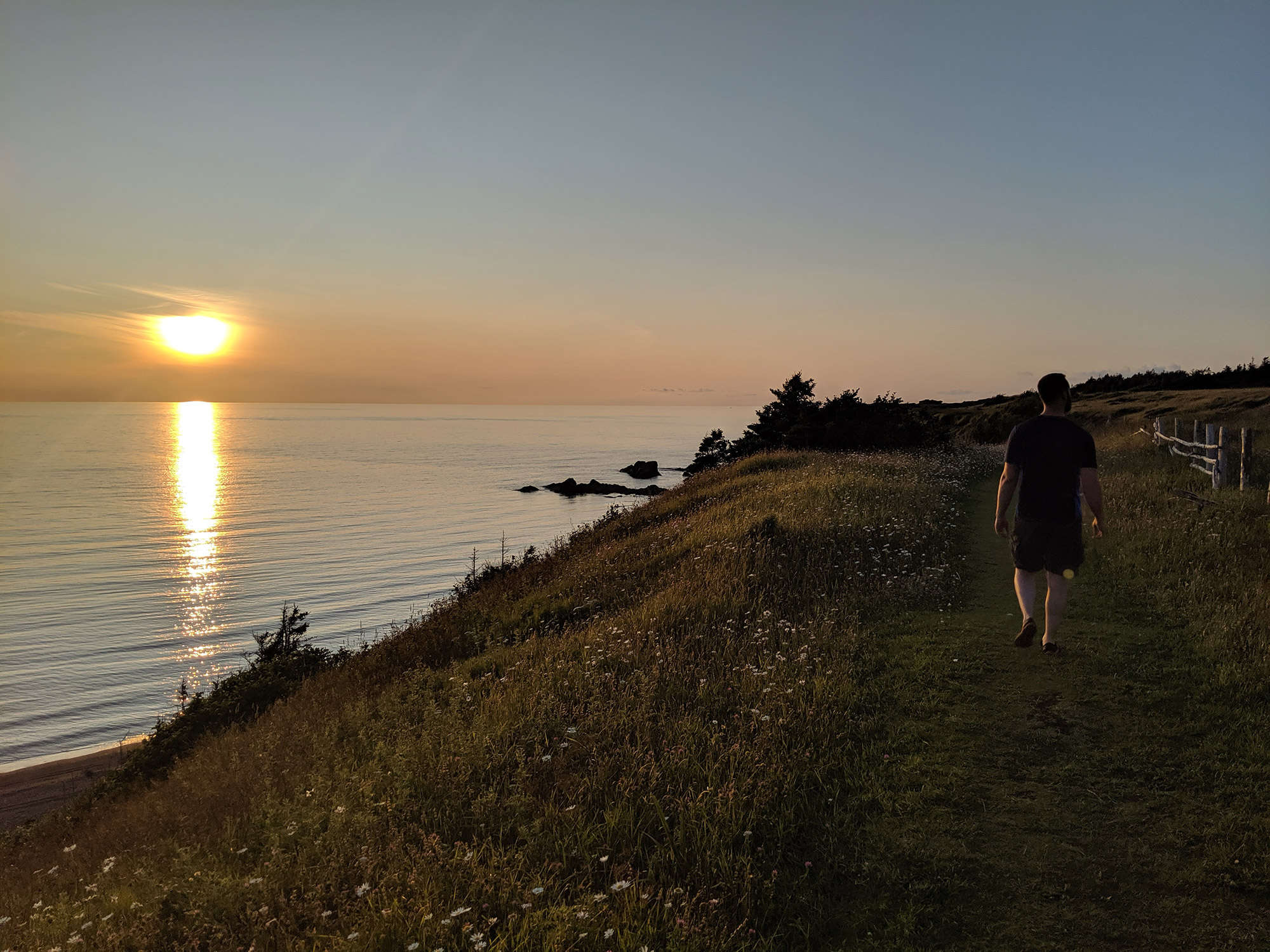
4. Watch Beautiful Sunsets Beachside
Whether you’re winding down after a long day of hiking or just love hanging out near the water, there are plenty of beach spots to watch the sunset from. Green Point, home to the park’s northernmost campground, is known for long sandy beaches and beautiful views. After dinner in camp, wander the Coastal Trail for a 3.7-mile round-trip hike as the sun sets. Though less beach and more rock pile, Lobster Cove is a spectacular sunset spot. Explore Lobster Cove Head Lighthouse and take the trails down to the water.
Interested in a more rugged, hard to reach beach? Make the 5.6-mile round-trip on the Green Gardens Trail to Old Man Cove, just be sure to check tidal charts before you head down to the beach or explore the sea caves along it. And just outside the park boundary in Trout River, the short Eastern Point Trail is all beautiful ocean scenery all the way.
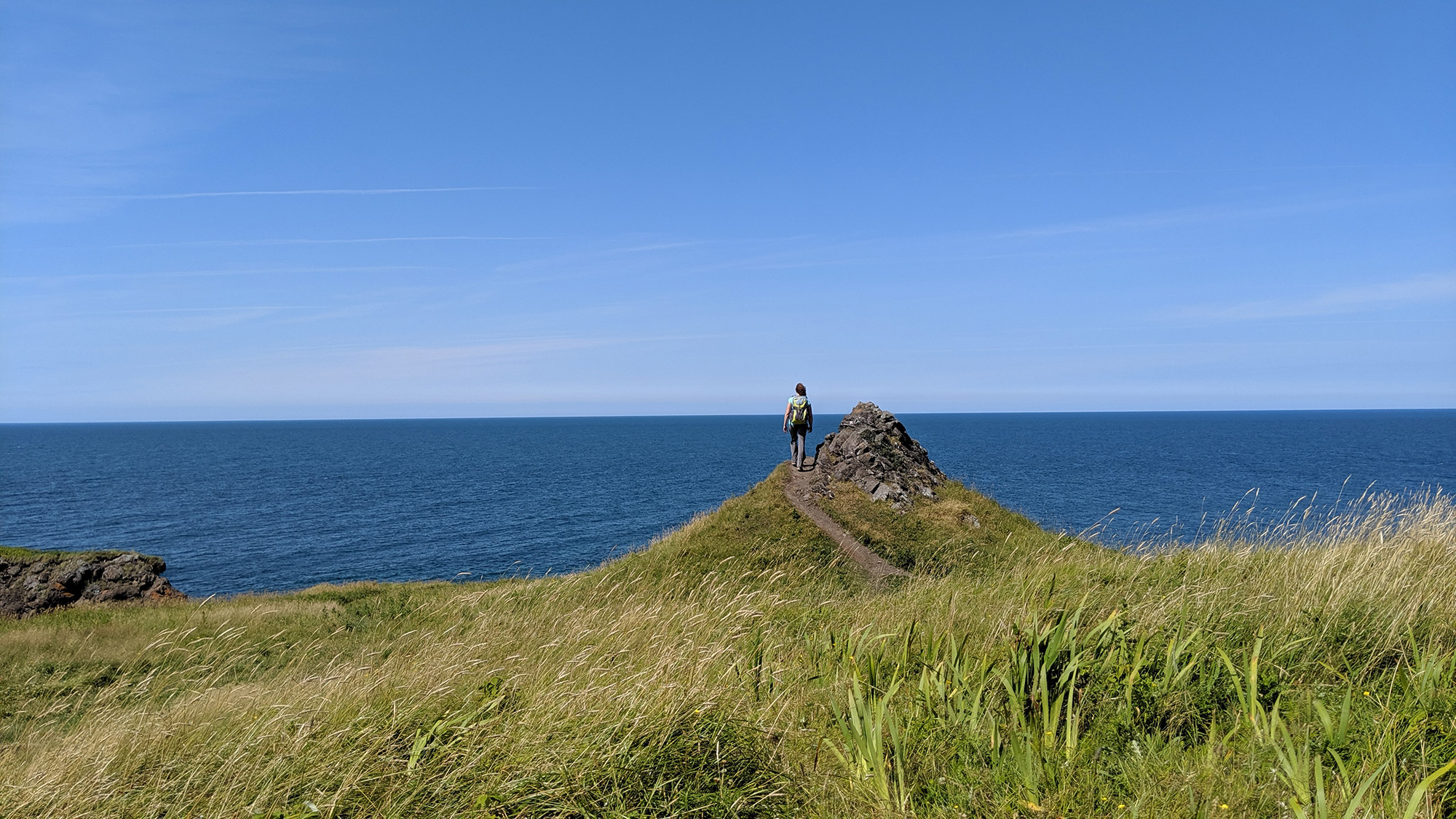
5. Day Hike All Sorts of Different Types of Terrain
Whether you’re a waterfall seeker, wildflower lover, summit chaser, or just looking for a leisurely stroll, there a day hike for everyone. Start with a day in the southern end of the park on the Green Gardens Trail to see Tablelands rock, deep forest, beach views, and sea caves all in one 5.6-mile hike. Then, another day on a landscape that looks and feels like another world in the Tablelands on the off trail loop (7.5 miles round-trip), or one of the shorter out and back routes.
Next, spend a long day climbing Gros Morne Mountain (10 miles round-trip) for spectacular views on a rocky, tree-less summit before heading to the Berry Hill Campground for a shorter day on the Baker’s Brook Falls Trail. The walk to the falls traverses deep woods on narrow boardwalks, perfect wildflower spotting terrain, and ends at a stunning cascade. Finally, finish your multi-terrain hiking adventure with a walk along the beach via the Coastal Trail or Old Mail Road.
Katie Levy
Katie Levy is a self-proclaimed outdoor adventure addict and loves sharing her passion for playing outside with anyone willing to listen. Though currently based in Philadelphia, spending her formative years in upstate New York and two years in Alaska fostered a lifelong passion for the outdoors. She followed that passion on backpacking trips in the Adirondacks and Catskills, on sub-zero winter hikes in the Chugach Mountains, up Mount Rainier, and around some of our nation's most incredible public lands. If she's not out on the trail, you'll find working on her other passion, Adventure-Inspired, or practicing her Olympic weightlifting skills with her barbell club.
Related Posts
April 12, 2024
Explore Like a Local: The Outdoor Mecca of North Conway, NH
There's a lot to love about this New…
April 3, 2024
5 Things To Do in the Boston Area During Mud Season
Adventure opportunities are abundant…




